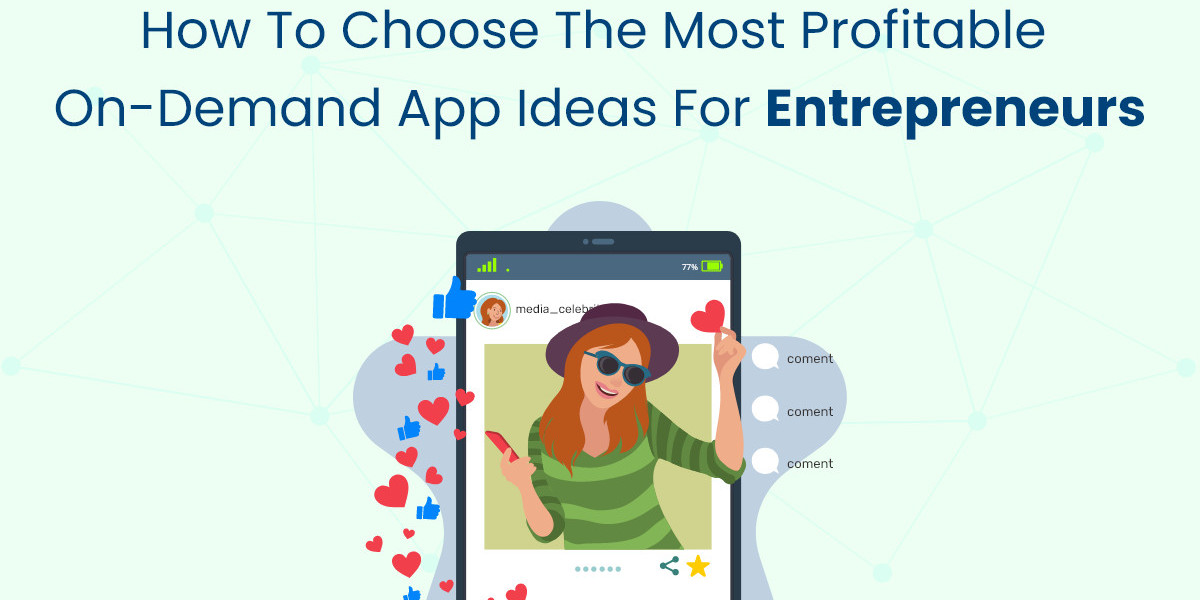The on-demand app market is booming, driven by the increasing demand for convenience and instant services. As an entrepreneur, finding profitable on-demand app ideas can be a game-changer for your business. But with numerous opportunities available, how do you select the most promising idea that aligns with market needs and ensures profitability? This guide will walk you through the essential steps and considerations for choosing a profitable on-demand app idea.
Identify Market Needs and Trends
Conduct Market Research
Understanding market needs is the first step in identifying a profitable on-demand app idea. Start by conducting thorough market research to uncover gaps and opportunities in various industries. Analyze current trends, customer pain points, and emerging technologies.
- Use Surveys and Interviews: Reach out to potential users to gather insights about their needs and preferences. Surveys and interviews can provide valuable information about the challenges they face and the solutions they seek.
- Analyze Industry Reports: Industry reports and market analysis can reveal trends and opportunities. Look for reports related to on-demand services and technology to understand where the market is heading.
- Study Competitors: Analyze existing on-demand apps to identify their strengths and weaknesses. Understand what makes them successful and where they fall short.
Evaluate Emerging Trends
Staying updated with emerging trends can help you spot profitable opportunities. Some current trends in the on-demand market include:
- Health and Wellness: On-demand health services, including telemedicine and fitness apps, are gaining traction.
- Elderly Care: As the aging population grows, there is increasing demand for on-demand services catering to elderly care.
- Sustainable and Eco-Friendly Services: Apps focusing on sustainability and eco-friendly solutions are becoming popular.
Assess the Target Audience
Define Your Target Audience
Understanding your target audience is crucial for choosing a profitable on-demand app idea. Define who your potential users are, their demographics, and their behavior patterns.
- Demographics: Consider factors such as age, gender, location, and income level. For example, a food delivery app might target busy professionals in urban areas.
- Behavioral Patterns: Analyze how your target audience spends their time and what services they use. This can help you tailor your app to their preferences and needs.
- Pain Points: Identify the specific problems your target audience faces. An app that effectively addresses these pain points is more likely to be successful.
Validate Your Idea
Once you have a clear understanding of your target audience, validate your app idea with them. Conduct focus groups, surveys, or pilot tests to gather feedback and ensure there is a demand for your app.
- Focus Groups: Organize focus groups with potential users to discuss your app idea and gather their opinions.
- Surveys: Create surveys to collect quantitative data on user preferences and willingness to use your app.
- Pilot Tests: Develop a minimum viable product (MVP) and test it with a small group of users to gather real-world feedback.
Analyze Revenue Models
Explore Different Revenue Models
Choosing the right revenue model is essential for maximizing profitability. Different on-demand apps utilize various revenue models, including:
- Subscription-Based: Users pay a recurring fee for access to premium features or services. This model provides a steady revenue stream and encourages user retention.
- Commission-Based: The app earns a commission on transactions between service providers and users. This model is commonly used in marketplaces and booking apps.
- Freemium: The app offers basic services for free, with additional features available through in-app purchases or subscriptions. This model can attract a large user base and generate revenue from premium features.
- Advertisement-Based: Revenue is generated through advertisements displayed within the app. This model works well for apps with a large user base and high engagement.
Consider Monetization Strategies
Think about how you will monetize your app and how it aligns with your target audience's preferences. Some monetization strategies include:
- In-App Purchases: Offer additional features or services for a fee within the app.
- Partnerships and Sponsorships: Collaborate with businesses or brands for sponsored content or promotions.
- Data Monetization: Leverage user data to generate insights and offer targeted advertising or market research services.
Evaluate Competition and Market Saturation
Conduct a Competitive Analysis
Assess the level of competition in your chosen market. Understanding your competitors’ strengths and weaknesses can help you differentiate your app and find a niche.
- Identify Key Competitors: Research existing on-demand apps in your chosen niche and analyze their features, user reviews, and market positioning.
- Analyze Competitor Strategies: Evaluate how competitors attract and retain users. Identify gaps in their offerings that your app can address.
- Determine Market Saturation: Assess the market saturation level to gauge whether there is room for a new entrant. High saturation may indicate a competitive market, but it can also mean strong demand.
Find Your Unique Selling Proposition (USP)
Develop a unique selling proposition (USP) that sets your app apart from competitors. Your USP should highlight what makes your app different and why users should choose it over others.
- Innovative Features: Offer features or services that are not available in existing apps.
- Enhanced User Experience: Focus on providing a superior user experience with intuitive design and seamless functionality.
- Targeted Solutions: Cater to specific user needs or niche markets that are underserved by current apps.
Consider Technical Feasibility
Assess Technical Requirements
Evaluate the technical feasibility of your app idea by considering the required technologies and development resources.
- Technology Stack: Determine the technology stack needed for your app, including programming languages, frameworks, and third-party services.
- Development Costs: Estimate the development costs, including design, coding, testing, and deployment. Ensure you have the necessary budget or funding.
- Scalability: Consider how your app will scale as user demand grows. Choose technologies and infrastructure that can support future growth.
Consult with Experts
Consult with development experts or agencies to assess the technical feasibility of your app idea. They can provide insights into the development process, potential challenges, and best practices.
Conclusion
Choosing a profitable on-demand app idea requires careful consideration and strategic planning. By identifying market needs and trends, assessing your target audience, analyzing revenue models, evaluating competition, and considering technical feasibility, you can increase your chances of success. Remember to validate your idea with real users and continuously refine your approach based on feedback and market changes. Learn how to select the best on-demand app ideas for your business!
Discover valuable insights from top entrepreneurs in the on-demand app development company industry. With the right strategy and a clear understanding of your market, you can turn your on-demand app idea into a profitable and impactful venture. By following these guidelines and leveraging the right tools and strategies, you’ll be well-equipped to select an on-demand app idea that not only meets market demands but also drives long-term profitability and success.








